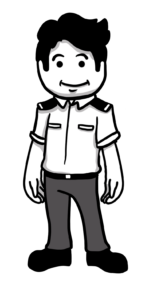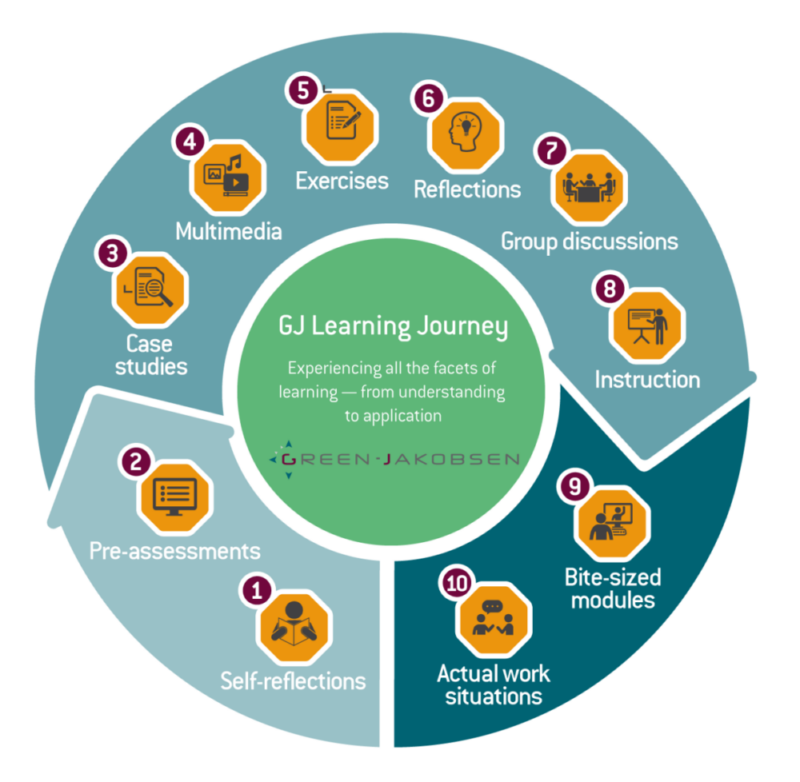Leading others - a useful skill to learn early
Along your career path you will have to acquire a range of new skills as you progress. And even though you are not a Master or a CEO (yet), you may get to lead a team or a process in the early stages of your work life. So, when will you actually need good leadership skills? – and thereby be better equipped to contribute to the achievement of company goals, a good working environment and safe processes?
In our work life, many of us will experience situations where we are expected to lead some of our colleagues. A bosun leads his team on the deck while a junior officer could have an important leadership role towards a cadet. Indeed, leadership is an important skill to be held by many individuals on board. In our effort to develop a sustainable and proactive work culture we need good role models, so it makes sense to start developing these individuals as early as possible.
Build on the Junior Officers’ strengths as early as possible
While many companies have focus on continuously developing the leadership skills of their senior officers, it makes good sense to also turn our eyes towards the junior officers. After all, they are the coming senior officers and since they already have a leadership role as a junior it is good investment to give them the necessary skills for fulfilling their present job but also as preparation for a future senior officer position.
It is not a secret that many senior officers find it challenging to master the necessary soft skills towards the crew, especially when they must face challenging situations. Also, the coaching and supporting role can be difficult and many barriers such as culture, personality, language, etc. exist. At senior officer conferences, we meet officers who are not capable of conducting a proper toolbox talk, or even knowing what it’s purpose is as they are not possessing strong communication skills. So, why not give the juniors the opportunity to learn these skills early in the career?
Another good reason for focusing on the juniors is that they will be strengthened in contributing positively to the dialogue on board. These young officers seem to master this discipline pretty well and this can put a pressure on the seniors to engage in more dialogue on board and thereby contribute to create better relations and direction.
Starting a progressive learning path
The courses are designed so that the course module content is not redundant, but rather has a progressive and continuous structure following a pre-designed learning path via a Learning Management System that ensures continuous access to refresher learning. Therefore, it is a cost-effective solution for the company as they will not have to repeat courses for the officers as they advance to a senior position. Let us say that a junior officer can start with the basic safety leadership course (Leadership 1) and, when he becomes a senior officer, he can then take the advanced safety leadership course (Leadership 2).
 Meet Jayson, a newly assigned 3rd Officer
Meet Jayson, a newly assigned 3rd Officer
Jayson’s learning path starts with preparation and the online course
Let us take a look at Jayson’s learning process. Before Jayson is joining the vessel, he will come by the company’s office for a short introduction and interview. The company’s Appraisal Process is the first document for Jayson to become acquainted with as a preparation for his assignment and the learning path he is now starting.
The next step for Jayson in his leadership learning process will be to participate in an online course. Here, the typical subjects will be Leadership theories and tools, appraisal processes, communication tools, goal setting, coaching, and corrective feedback. During the course he will be part of a series of group work and interactive scenarios where he must actively prepare for later onboard facilitating, for example, leading a sign-on meeting or a safety meeting. He will get assistance by means of useful tools that will take him through these processes in a confident and secure way.
In the second module of the online course, subjects like risk management, conflict management and objection management are included. By means of scenarios he will have to lead the process of a risk assessment, the conduction of a toolbox talk and debriefing with the deck team.
Finally, in the last module he will be introduced to topics such as mental health awareness, and cultural awareness, and how these affect his role as onboard leader.

Taking the learning into workplace practice, reflection exercises and networking
During these three online course modules, Jayson has now received a number of tools which he has put into practice in concrete scenario contexts. Now, its time to apply these learnings on board.
While managing specific work processes, such as leading a sign-on meeting as well as preparing and managing a risk management process, he will be requested to note down his experiences in an online reflection logbook. The purpose is for Jayson to share his experiences later on with other junior officers as the feedback that the course participants can give each other will provide a very strong learning effect.
Jayson’s learning process will be concluded with another online course day where facilitator and participants meet online and share the experiences, they have recorded in their reflection logbooks. This networking session gives him the opportunity to discuss issues or challenges with peers.
Ready for the performance appraisal
The company’s marine HR department will be able to follow Jayson’s learning process and see his progress via status reports. Moreover, the course facilitator will share minutes of the sessions with the Marine HR as well. This is a strong tool both for Jayson who can document his active participation and learning process and for the Marine HR department as they will be able to follow Jayson’s skills progression. An important element in Jayson’s next performance appraisal.
A very strong learning path
In this short video Bjarke Jakobsen briefly explains how the learning path has been designed:
Contact us for personal advice
Would you like us to call you?
you can compose the best course for your leaders


